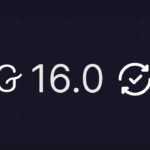WordPress, the powerhouse content management system that fuels millions of websites worldwide, is unfortunately also a popular target for cyberattacks. Protecting your WordPress website is not just a good idea; it’s absolutely essential. With the right WordPress security plugins, you can fortify your site against vulnerabilities, malware, and other threats, ensuring your content, user data, and online reputation remain safe and sound. This comprehensive guide explores the world of WordPress security plugins, offering insights and recommendations to help you choose the best solutions for your specific needs.
Understanding the Importance of WordPress Security Plugins
WordPress’s open-source nature, while providing flexibility and customization, also makes it susceptible to security breaches. Vulnerabilities in themes, plugins, or even the WordPress core itself can be exploited by malicious actors. A single successful attack can lead to data loss, website defacement, SEO penalties, and irreparable damage to your brand.
Common WordPress Security Threats
Before diving into plugins, it’s crucial to understand the threats they protect against:
- Brute Force Attacks: Repeated attempts to guess usernames and passwords.
- Malware Infections: Malicious code injected into your website files.
- Cross-Site Scripting (XSS): Attackers injecting malicious scripts into your website, affecting users.
- SQL Injection: Exploiting vulnerabilities in your database to gain unauthorized access.
- File Inclusion Vulnerabilities: Attackers including malicious files on your server.
- Denial-of-Service (DoS) Attacks: Overwhelming your server with traffic, making your website unavailable.
Why You Can’t Rely on Default Security Measures
While WordPress implements some basic security features, they are often insufficient for robust protection. Relying solely on default settings is like leaving your front door unlocked. Security plugins add layers of protection that address these vulnerabilities, providing a comprehensive defense against evolving threats. According to Sucuri, a leading website security firm, 56% of hacked WordPress sites were running outdated versions, and vulnerable plugins and themes were major contributing factors.
Essential Features of a WordPress Security Plugin
Choosing the right security plugin can feel overwhelming. Here are the key features to look for:
Malware Scanning and Removal
- Functionality: Regularly scans your website files and database for malicious code.
- Benefits: Identifies and removes malware before it can cause significant damage.
- Example: A good plugin will automatically quarantine infected files and offer options for cleaning them. Some even provide remote scanning, adding an extra layer of detection.
Firewall Protection
- Functionality: Acts as a barrier between your website and potential attackers, filtering out malicious traffic.
- Benefits: Prevents unauthorized access and protects against brute force attacks, XSS, and other threats.
- Example: A Web Application Firewall (WAF) can analyze HTTP traffic and block requests that match known attack patterns. Many plugins offer configurable firewall rules to tailor protection to your specific needs.
Login Security Hardening
- Functionality: Implements measures to protect against brute force attacks and unauthorized login attempts.
- Benefits: Makes it significantly harder for attackers to gain access to your WordPress admin area.
- Example: Features like limiting login attempts, enforcing strong passwords, two-factor authentication (2FA), and reCAPTCHA integration are crucial. Consider using a plugin that allows you to customize the login URL, making it harder for bots to find.
Activity Monitoring and Logging
- Functionality: Tracks user activity and website events, providing insights into potential security threats.
- Benefits: Enables you to identify suspicious behavior and investigate security incidents.
- Example: Logging user logins, file changes, plugin installations, and other important events can help you detect unauthorized access and track down the source of a security breach.
Vulnerability Scanning and Patching
- Functionality: Identifies outdated themes and plugins with known security vulnerabilities.
- Benefits: Allows you to proactively patch vulnerabilities before they can be exploited.
- Example: A good plugin will alert you to outdated software and provide recommendations for updating or replacing them. Some plugins even offer automatic updates, but proceed with caution as updates can sometimes break compatibility.
Top WordPress Security Plugins: A Detailed Look

Here’s a breakdown of some of the most popular and effective WordPress security plugins:
Wordfence Security
- Features: Comprehensive security suite including a WAF, malware scanner, login security, and traffic monitoring.
- Pros: Free version offers excellent protection; real-time threat intelligence updates.
- Cons: Premium version required for advanced features and support.
- Actionable Takeaway: Start with the free version of Wordfence and upgrade to premium if you need more advanced features and real-time protection.
Sucuri Security
- Features: Website firewall, malware scanning, security hardening, and website monitoring.
- Pros: Known for its excellent website cleaning services.
- Cons: Firewall functionality requires a paid subscription.
- Actionable Takeaway: Sucuri’s firewall is a strong selling point, making it a valuable investment for ongoing protection.
iThemes Security
- Features: Brute force protection, file change detection, 404 detection, and strong password enforcement.
- Pros: Easy to use and configure, with a wide range of security features.
- Cons: Free version has limited features compared to the pro version.
- Actionable Takeaway: iThemes Security is a good choice for beginners due to its user-friendly interface and clear explanations of security settings.
All In One WP Security & Firewall
- Features: Firewall protection, login security, database security, and file system security.
- Pros: Completely free and open source.
- Cons: Can be complex to configure for beginners.
- Actionable Takeaway: A great option for users who want a powerful, free security solution and are comfortable with technical configurations.
Best Practices for WordPress Security
Even with a security plugin in place, it’s crucial to follow these best practices for optimal protection:
Strong Passwords and User Permissions
- Actionable Takeaway: Enforce strong passwords for all user accounts and grant the least necessary privileges to each user. Use a password manager to generate and store complex passwords. Regularly review user accounts and remove inactive or unnecessary accounts.
Regular Updates
- Actionable Takeaway: Keep WordPress core, themes, and plugins up to date with the latest security patches. Enable automatic updates for minor WordPress releases. Before updating plugins or themes, back up your website to ensure you can restore it if something goes wrong.
Website Backups
- Actionable Takeaway: Regularly back up your entire website (files and database) to a secure offsite location. Test your backups regularly to ensure they can be restored successfully. Consider using a backup plugin like UpdraftPlus or BackupBuddy.
Secure Hosting
- Actionable Takeaway: Choose a reputable web hosting provider with robust security measures in place. Look for features like server-level firewalls, malware scanning, and intrusion detection systems. Many managed WordPress hosting providers offer enhanced security features as part of their packages.
Limiting Plugin Usage
- Actionable Takeaway: Only install plugins from trusted sources and carefully evaluate their security before installing them. Regularly review your installed plugins and remove any that are no longer needed or actively maintained. Plugins that haven’t been updated in a long time can be a security risk.
Conclusion
Protecting your WordPress website is an ongoing process, not a one-time fix. By implementing a WordPress security plugin and following security best practices, you can significantly reduce your risk of falling victim to cyberattacks. Regularly review your security measures and stay informed about the latest threats to ensure your website remains safe and secure. Choosing the right WordPress security plugin, coupled with proactive security measures, will safeguard your online presence and give you peace of mind.


